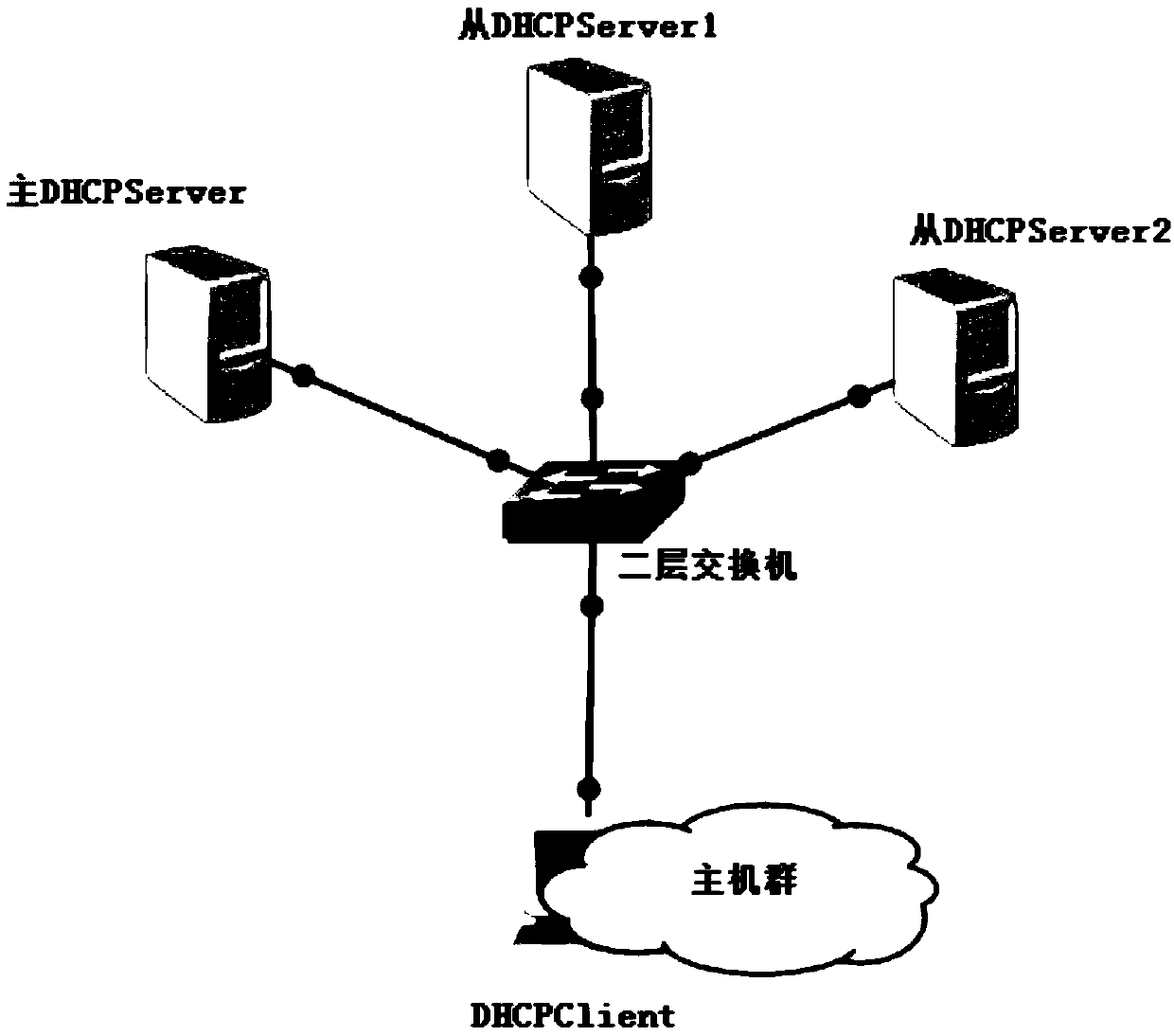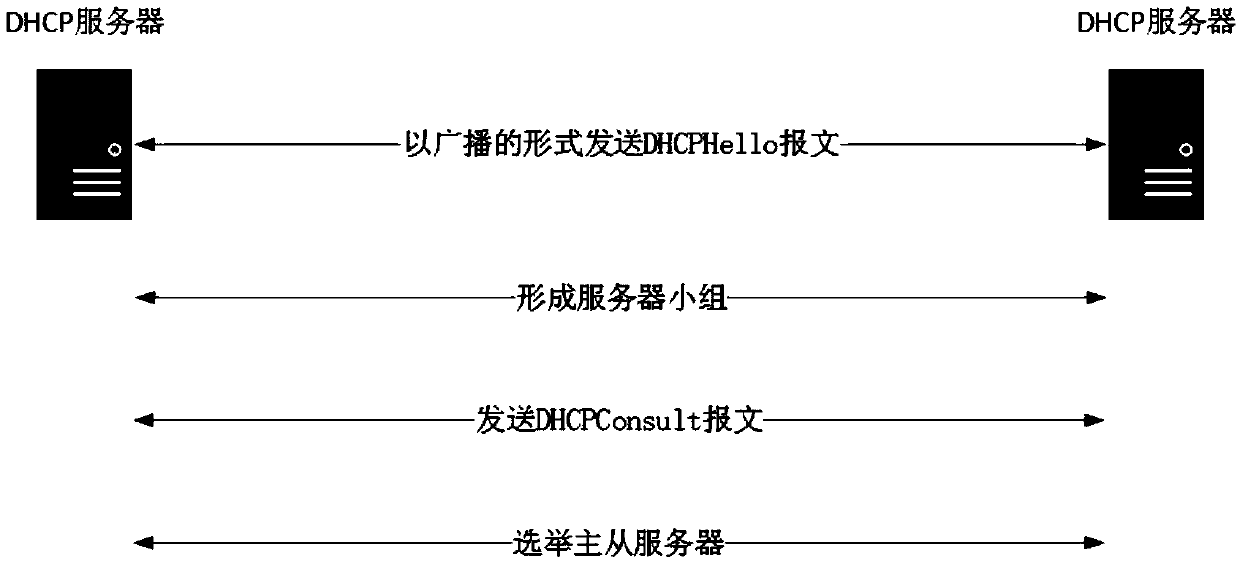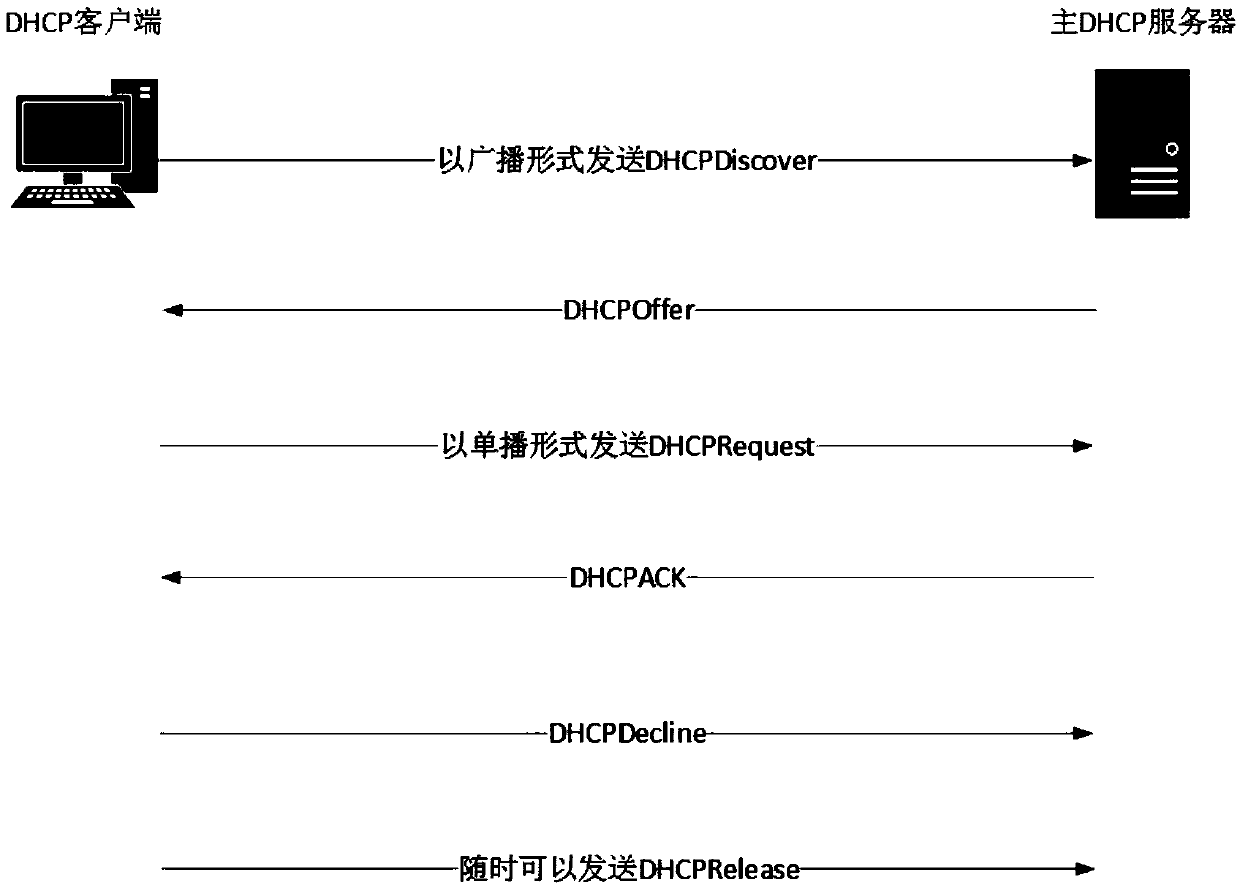A method for controlling dynamic distribution of host addresses by multiple dhcp servers
A host address, dynamic allocation technology, applied in the field of data communication, can solve problems such as disrupting normal communication of users and wasting bandwidth
- Summary
- Abstract
- Description
- Claims
- Application Information
AI Technical Summary
Problems solved by technology
Method used
Image
Examples
Embodiment Construction
[0037] Such as figure 1 As shown, there are three DHCP servers. Before providing services to DHCP clients, the three need to perform mutual authentication. After successful authentication, a server group will be established. Then the team members negotiate among themselves, and finally select one as the master DHCP server, and the other two as slave DHCP servers. After the main DHCP server is selected, it begins to serve the DHCP clients. The DHCP client only needs to communicate with the main DHCP server to obtain the desired IP address.
[0038] Such as figure 2 As shown in the figure, when there are multiple DHCP Servers in the local area network, the specific steps of negotiation among the DHCP Servers are as follows:
[0039] (1) Each DHCP server sends a DHCPHello message in the form of broadcast, which carries a verification field;
[0040] (2) After the DHCPC client in the local area network receives this message, it does not do any processing and directly discards...
PUM
 Login to View More
Login to View More Abstract
Description
Claims
Application Information
 Login to View More
Login to View More - R&D
- Intellectual Property
- Life Sciences
- Materials
- Tech Scout
- Unparalleled Data Quality
- Higher Quality Content
- 60% Fewer Hallucinations
Browse by: Latest US Patents, China's latest patents, Technical Efficacy Thesaurus, Application Domain, Technology Topic, Popular Technical Reports.
© 2025 PatSnap. All rights reserved.Legal|Privacy policy|Modern Slavery Act Transparency Statement|Sitemap|About US| Contact US: help@patsnap.com



